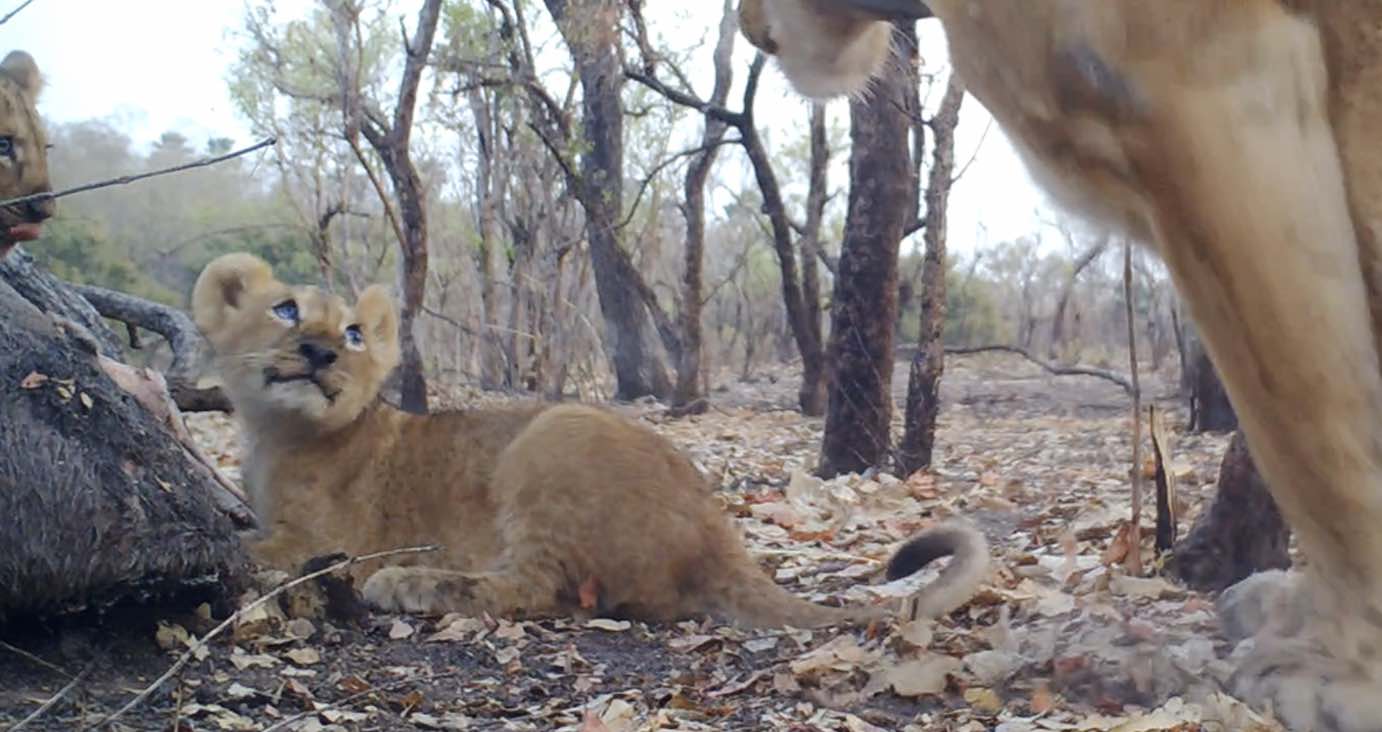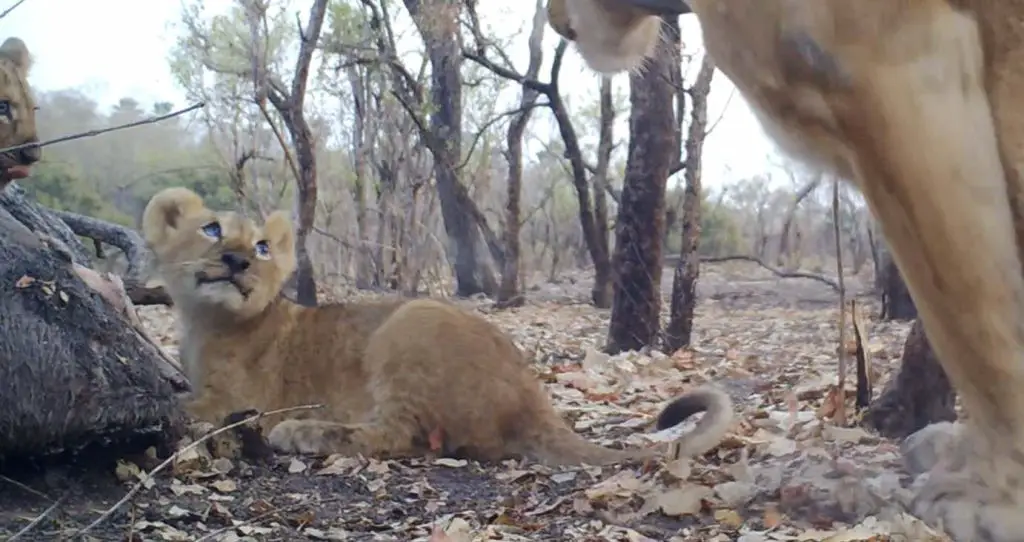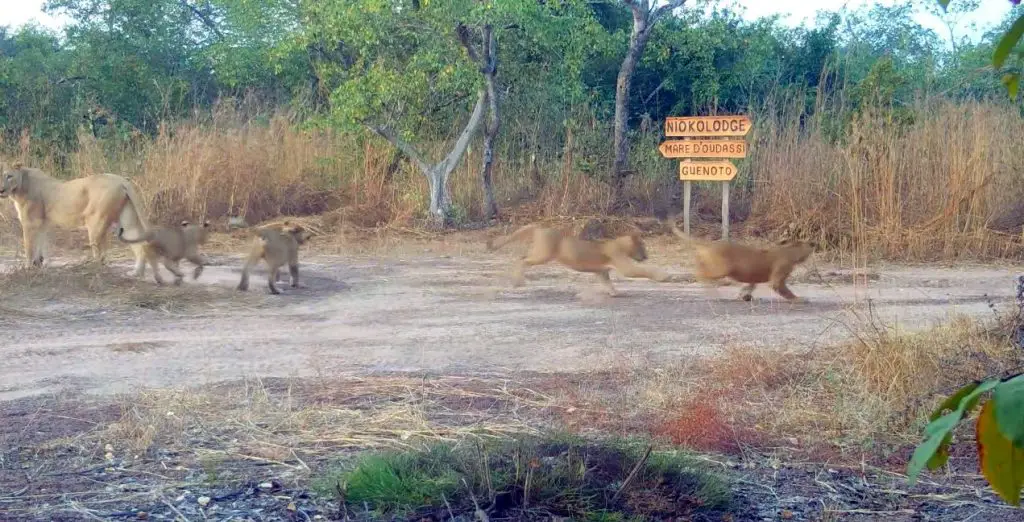
In an exciting glimpse of hope for the critically endangered West African lion, conservation group Panthera shared camera trap videos and photos of a lioness and her three playful cubs in Senegal’s Niokolo Koba National Park. The vivid footage showcases Florence, a lioness aged between 9 and 10 years, who wears a GPS collar. Researchers believe that since 2021, she’s had three litters, bringing a total of nine cubs into the world.

Now recognized as Niokolo Koba’s leading lady, this lioness has given birth to about a third of the park’s lion population. From a fragile group of just 10 to 15 lions in 2011, the park’s lion count has possibly risen to around 40 today.
Currently, the wild holds an estimated 120-374 West African lions, having faced a whopping 99% decline from their historic range. These lions belong to the Northern lion subspecies, which originally roamed across North Africa.
Last year, WaL discussed the lions of NKNP and Panthera’s West and Central Africa Regional Director, Dr. Philipp Henschel, mentioned that these lions had settled in a small central area, which makes up about 10% of the park’s vast 9,000 square kilometers.
Fast forward to now, these lions have begun exploring beyond their comfort zone.
“After setting up camera traps throughout the park last year, we discovered lions in places we didn’t even know they existed,” Dr. Henschel shared with WaL. “In fact, around 35% of the park shows signs of lion presence, and there might be even more areas we haven’t detected yet.”
Since lions are social creatures, some of this expanded territory could hint at the beginnings of new prides. Camera footage has shown a group of unaffiliated males wandering the park, many of whom might be descendants of Florence.
“We’ve observed several lions, including females, venturing out of the central area,” says Dr. Henschel. “As these lions settle into new territories, the females mate, leading to the rise of new prides in previously unoccupied regions.”

Defying expectations,
Henschel, alongside his Panthera team, stepped foot into Senegal’s grandest national park, and one of West Africa’s largest, back in 2011. The circumstances were grim and filled with uncertainty.
Working with a dedicated but inadequately equipped group of rangers, they managed to place a collar on Florence during a nighttime operation last year.
“Until now, they were never collared, so our knowledge about these cats was close to nothing,” Henschel shared with WaL just a year ago in May.
“They were elusive creatures. Back in 2011 during our initial survey, I had a team of four, all from the park’s staff. Not one of them had ever laid eyes on a lion. One team member, who had been driving through the park for a decade, had never encountered a lion,” recalled Henschel.
Today, the effort to rejuvenate the lion population has progressed better than anyone might have imagined. The government is showing increased interest. They’ve successfully funded, trained, and sustained three armed ranger teams that, last year, patrolled nearly 9,000 kilometers, covering approximately 35% of the park on foot.
The park’s chief conservator has further committed to equipping and hiring three additional ranger teams. Henschel emphasized the significance of this move by the government, noting the dedication involved in providing proper paramilitary training and offering competitive salaries.
“When I conducted the initial lion surveys back in 2011, I searched intensively for any signs of them, like their droppings. Even then, when the population was just between 10-15 lions, things seemed alright,” Dr. Henschel recalled.
“The genetic expert I consulted was optimistic. They found that the genetic diversity remained high, suggesting a recent drop in lion numbers, but the population still retained its unique genetic variation.”
Dr. Henschel added, “Upon studying the lion genetics, they discovered that the Senegal lions possess certain genetic markers not found in any other lion population globally. They’re truly unique to Senegal. Ideally, we’d keep this genetic group undisturbed, but our next steps depend on the results of our in-depth genetic study.”
“Next year, we’re expecting the results from the analysis. Both the central government and the parks department are eager to tap into the potential tourism that these lions can bring. This park is vast, comparable in size to the US’s Yellowstone, and it’s home to other rare creatures like leopards and the only remaining group of West African wild dogs,” explained Dr. Henschel.
“Since we began our work, lion sightings have become much more common,” he continued. “There’s a new lodge in the park. I chatted with the lodge manager recently, and they’re all booked up for the wildlife viewing season. So, things are definitely looking up in that aspect.”



